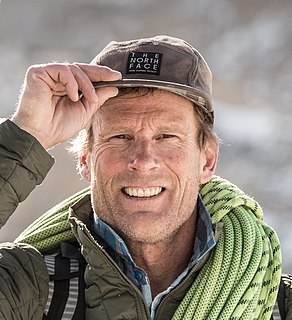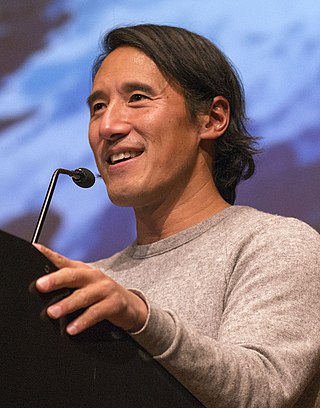External links
- Expedition's YouTube website
- Altitude Everest expedition 2007
The 2007 Altitude Everest expedition, led by the American climber Conrad Anker, arrived at Base Camp below the north face of Everest in May 2007 and retraced the last journey of British climber George Mallory who was lost during the 1924 British Mount Everest expedition.
On 8 June 1924, Mallory, along with his climbing partner Andrew Irvine, set out for the summit of Everest but disappeared from view short of the summit. The mystery of whether they could have been the first climbers to reach the world's highest point has never been resolved. Anker and his colleagues investigated what happened to them, testing out the durability of their clothing and equipment to establish whether Mallory and Irvine could have reached the summit in the conditions they faced in 1924.
Conrad Anker discovered George Mallory’s body lying on the mountain in 1999, 75 years after he had disappeared into the clouds near the summit. Accompanying Anker to retrace Mallory’s steps was British climber Leo Houlding. Anker and Houlding were joined by Kevin Thaw, Ken Sauls and Jimmy Chin, and a back-up team that included technical and medical support. Overseeing the expedition was Russell Brice.
Anker and Houlding successfully free-climbed the Second Step, having first removed the Chinese ladder (which was later replaced). Houlding rated the climb at 5.9, just within Mallory's estimated capabilities. However, Anker fell off the Step on his first attempt, raising the question if a 5.12-grade climber has trouble with it, how well can a 5.9 climber be expected to do. Eight years earlier Anker had climbed the Second Step as part of the Mallory and Irvine Research Expedition but had used one point of aid by stepping on a rung of the ladder. At that time he had rated the climb at 5.10 and probably beyond Mallory; after the June 2007 climb he changed his view and said that "Mallory and Irvine could have climbed it". The climbing community still remains split on the subject of whether Mallory was capable of having climbed the Second Step.

Mount Everest is Earth's highest mountain above sea level, located in the Mahalangur Himal sub-range of the Himalayas. The international border between Nepal and China runs across its summit point.

George Herbert Leigh Mallory was an English mountaineer who took part in the first three British expeditions to Mount Everest, in the early 1920s.

Andrew Comyn "Sandy" Irvine was an English mountaineer who took part in the 1924 British Everest Expedition, the third British expedition to the world's highest mountain, Mount Everest.
The goal of the Mallory and Irvine Research Expedition of 1999 was to discover evidence of whether George Mallory and Andrew Irvine had been the first to summit Mount Everest in their attempt of 8–9 June 1924. The expedition was organised by regular Everest expedition leader Eric Simonson and advised by researcher Jochen Hemmleb, with a team of climbers from the United States, the United Kingdom, and Germany. Hemmleb's investigations of sketchy reports of earlier sightings and photographs had led him to identify what he believed was the area in which Irvine's body lay, some distance below where his ice axe had been found by Percy Wyn-Harris on the expedition led by Hugh Ruttledge in 1933. The team hoped in particular to find a camera on Irvine's body which, had the pair been successful, should have contained a picture of the summit. After commencing the search on 1 May 1999, Conrad Anker mistakenly got off course and, surprisingly, found Mallory's body, not Irvine's.

Noel Ewart Odell FRSE FGS was an English geologist and mountaineer. In 1924 he was an oxygen officer on the Everest expedition in which George Mallory and Andrew Irvine famously perished during their summit attempt. Odell spent two weeks living above 23,000 feet (7,000m), and twice climbed to 26,800-ft and higher, all without supplemental oxygen. In 1936 Noel Odell with Bill Tilman climbed Nanda Devi, at the time the highest mountain climbed.
Leo Houlding is a British rock climber. At the age of 18 Houlding became the first Briton to free climb El Capitan in the Yosemite Valley, and has gone on to climb many of its toughest lines.
Mount Everest is the world's highest mountain, with a peak at 8,848 metres (29,029 ft) above sea level. It is situated in the Himalayan range.

Conrad Anker is an American rock climber, mountaineer, and author. He was the team leader of The North Face climbing team for 26 years until 2018. In 1999, he located George Mallory's body on Everest as a member of a search team looking for the remains of the British climber. Anker suffered a heart attack in 2016 during an attempted ascent of Lunag Ri with David Lama. Anker was flown via helicopter to Kathmandu where he received emergency surgery. Afterwards he retired from high altitude mountaineering, but otherwise he continues his work. He lives in Bozeman, Montana.
Russell Reginald Brice is a New Zealand mountaineer. He is also the owner/manager of Himalayan Experience Ltd., a climbing expedition company. He has summited Cho Oyu seven times, Himal Chuli and Mount Everest twice, as well as Manaslu in October 2010, which was his 14th summit of an 8000 m peak.
Kevin Thaw is a British rock climber and mountaineer.

Jimmy Chin is an American professional climber, photographer, and Academy Award winning film director.

The 1924 British Mount Everest expedition was—after the 1922 British Mount Everest expedition—the second expedition with the goal of achieving the first ascent of Mount Everest. After two summit attempts in which Edward Norton set a world altitude record of 28,126 feet (8572 m), the mountaineers George Mallory and Andrew "Sandy" Irvine disappeared on the third attempt. Their disappearance has given rise to the long-standing unanswered question of whether or not the pair climbed to the summit. Mallory's body was found in 1999 at 26,760 feet (8155 m), but the resulting clues did not provide conclusive evidence as to whether the summit was reached.

The 1922 British Mount Everest expedition was the first mountaineering expedition with the express aim of making the first ascent of Mount Everest. This was also the first expedition that attempted to climb Everest using bottled oxygen. The expedition would attempt to climb Everest from the northern side out of Tibet. At the time, Everest could not be attempted from the south out of Nepal as the country was closed to Western foreigners.

Mount Mallory is a mountain located in the Sierra Nevada of California. The boundary between Inyo National Forest and Sequoia National Park runs across the summit. The peak was named in memory of George H. Leigh Mallory, of the 1924 British Mount Everest expedition, who was lost on Mount Everest, June, 1924. Norman Clyde advanced Mallory's and Andrew Irvine's names following their loss after attaining the highest altitude reached by a mountain climber.

The Wildest Dream is a 2010 theatrical-release feature documentary film about the British climber George Mallory who disappeared on Mount Everest in 1924 with his climbing partner Andrew Irvine. The film interweaves two stories, one about climber Conrad Anker returning to Everest to investigate Mallory's disappearance and the other a biography of Mallory told through letters, original film footage from the 1920s and archival photos. The film was released in the US and on giant screen cinemas around the world by National Geographic Entertainment in August 2010 as The Wildest Dream: Conquest of Everest. The film was released in the UK by Serengeti Entertainment in September 2010 as The Wildest Dream.

The Norton Couloir or Great Couloir is a steep gorge high on the north face of Mount Everest in Tibet which lies east of the pyramidal peak and extends to within 150 m below the summit.

The Three Steps are three prominent rocky steps on the northeast ridge of Mount Everest. They are located at altitudes of 8,564 metres (28,097 ft), 8,610 metres (28,250 ft), and 8,710 metres (28,580 ft). The Second Step is especially significant both historically and in mountaineering terms. Any climber who wants to climb on the normal route from the north of the summit must negotiate these three stages.

Bottled oxygen is oxygen in small, portable, high pressure storage cylinders, as used for high-altitude climbing. Bottled oxygen may also be for a breathing gas, especially for scuba diving or in surgeries.

The 1933 British Mount Everest expedition was, after the reconnaissance expedition of 1921, and the 1922 and 1924 expeditions, the fourth British expedition to Mount Everest and the third with the intention of making the first ascent.

Mount Irvine is a mountain in the Sierra Nevada of California. The summit is in Inyo National Forest and the John Muir Wilderness. The peak was named in memory of Andrew Irvine, of the 1924 British Mount Everest expedition, who perished on Mount Everest, June, 1924. Norman Clyde proposed Irvine's and George H. Leigh Mallory's names following their loss after attaining the highest altitude reached by a mountaineer.